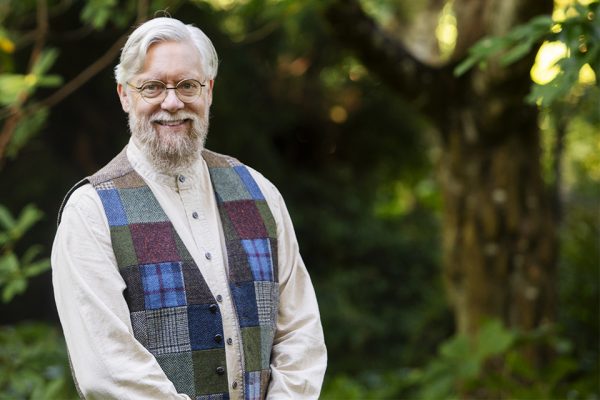My Royal Society of Canada Induction talk (just to give you an idea of what I get up to): here.
My research program addresses the broad question of how second (or third) language learners acquire the phonological knowledge of their new languages. Drawing on an insight of Chomsky’s we can categorize two interesting areas of the field: Plato’s Problem and Orwell’s Problem. Plato’s problem is that we acquire aspects of linguistic knowledge which are either completely absent from or impoverished in the input available to the learner. Orwell’s Problem is that we fail to acquire some knowledge that is abundantly present in the input. My research addresses both of these problems.
My recent Oxford University Press monograph –Phonology in Multilingual Grammars: Representational Complexity and Linguistic Interfaces–draws together a number of strands of my research program from over the years. I explore the phonetics/phonology interface by proposing the intake frequency hypothesis. I explore the phonology/morphology interface with a Distributed Morphology framework looking at the nature of the bilingual lexicon. I explore the phonology/syntax interface by looking at the phonology of the L2 acquisition of Japanese WH questions (demonstrating phonological but not syntactic contiguity in the interlanguage grammars). I also look at the phonological influences on cross-modal bilinguals when it comes to such things as relative clause attachment preferences in deaf learners of English.
My early research focused on the acquisition of stress systems. By looking at the production of English stress by Hungarian and Polish speakers, I discovered that they were able to acquire metrical knowledge which is not easily read off the speech stream. For example, they learned the difference between heavy and light syllables in their grammar. This phonological knowledge has no reliable phonetic cue and yet it was acquired (Plato’s Problem). By looking at the perception of stress by these same learners, I discovered that they would reliably misperceive stress placement based on the properties of their first language stress system. So, while the English word might be aróma, a Hungarian speaker could mis-hear this as ároma (because Hungarian has initial stress placement). They do not pick up on the information in the input and produce an non-nativelike form (Orwell’s Problem).
My work has also focused on attempting to categorize the conditions under which transfer from the first language can be overcome. It is well established that the grammar of the first language exerts an important influence on second language grammars. This kind of perceptual filter is probably the most obvious example of Orwell’s problem. Particularly at beginning stages of proficiency, we shoe-horn L2 sounds into our L1 categories. Some researchers have argued that if your L1 is lacking a phonological feature then you will be unable to trigger that feature in your L2. However, if your L1 has the relevant feature then you can use that feature to acquire new segments (even if the segments are lacking from your L1). This is what is known as the Deficit Hypothesis; L2 grammars may, in some way, be deficient compared to native speaker grammars. I have argued that this is too strong an empirical stance. Our current theory suggests that when the input contains what are known as robust phonetic cues that the L1 phonological filter can be overridden. This is fleshed out in the intake frequency hypothesiswhich articulates why some ejectives in some syllabic positions are acquired before others.
We have also demonstrated that under certain conditions, L1 knowledge can be re-deployed to acquire new L2 contrasts even if robust cues are not present. Flege’s Speech Learning Model claims that when an L2 sound is too similar (or perceptually close) to an existing L1 sound that learning difficulty will arise. What I argue is that phonological structure is also a key predictor. Summerell looked at English learners of Japanese long vowels and consonants. English lacks a length distinction in this domain. However, she discovered that they are able to redeploy the properties of their stress system (particularly the difference between heavy and light syllables) to acquire Japanese long consonants and vowels. Darin Flynn and I are currently working on a monograph on redeployment for the Cambridge Elements series.
More recently, I have been looking at the redeployment of right-edge syllabic appendices to acquire left-edge appendices. These strands (with students Yousefi and Alhemaid) have demonstrated that certain subjects – whose L1 lacks onset clusters (e.g. Persian) – have no difficulty perceiving L2 clusters while other subjects – whose L1 also lacks onset clusters (e.g. Japanese) have significant difficulty perceiving the L2 clusters. We, thus, explore the phenomenon of illusory vowels – vowels which are perceived when they are not, in fact, in the acoustic input stream. This is a learnability problem we have coined Escher’s Problem. The difference between the subjects in terms of L2 success can be explained by the nature of their L1 phonological representation.
Other recent work with students looks at the role of modified input in the acquisition of L2 phonology. One study (Kim) looks at the effects of stress diacritics on the L2 production of English stress in Korean learners. Another (Yuan) looks at the effects of modified durational input in training Mandarin listeners to accurately discriminate English tense vs lax vowels. There is also a research strand with two students (Hilderman and Stefanich) focussing on the phonology of intraword codeswitching. Hilderman’s work looks at the production of codeswitches within the Modular Cognitive Framework of Sharwood Smith, while Stefanich’s work seeks to explain the mental representation within a Distributed Morphology model.
My most recent work has been focussing on third language acquisition (L3A) of phonology arguing that L3 grammars are influenced on a property-by-property basis. Ongoing research adopts the Contrastive Hierarchy of Dresher to explore phonological competence in L2A and L3A.
My current SSHRC grant investigates the L3 acquisition of prosodic phonology by looking at (1) Japanese pitch accent, and (2) Quebec French pitch accent. The Japanese study compares L1-Mandarin/L2-English/L3-Japanese participants with L1-English/L2 Japanese participants (with an L1 control group). The Quebec French study compares L1-Mandarin/L2-English/L3-Quebec French participants with L1-English/L2-Quebec French participants. The Japanese project has both a perception and production component, while the Quebec French component has on the perception component.

